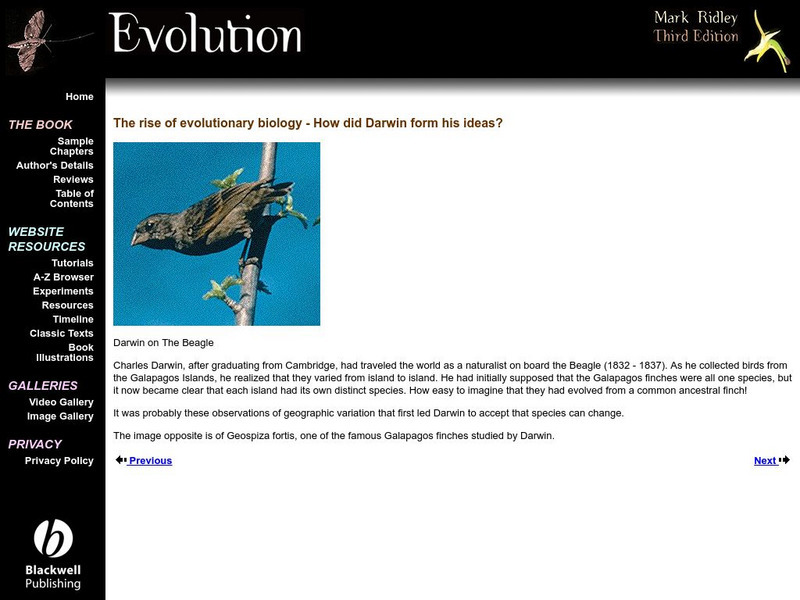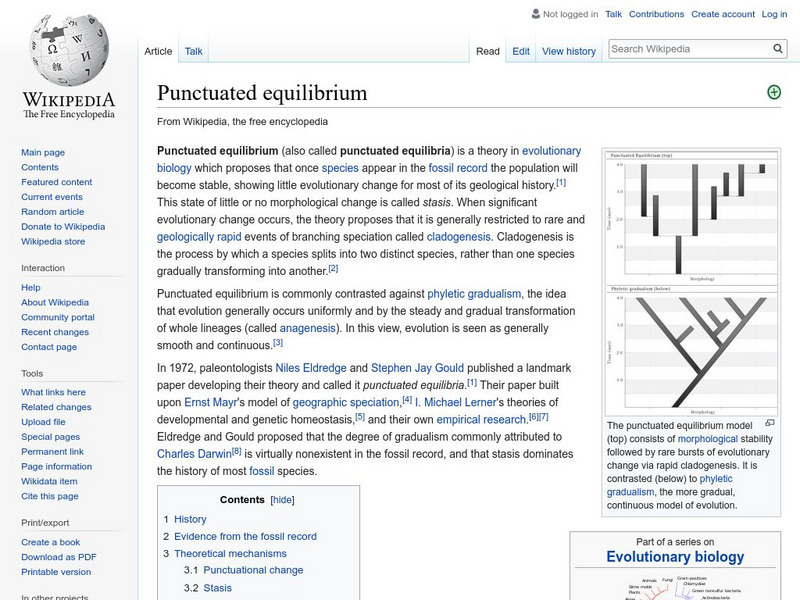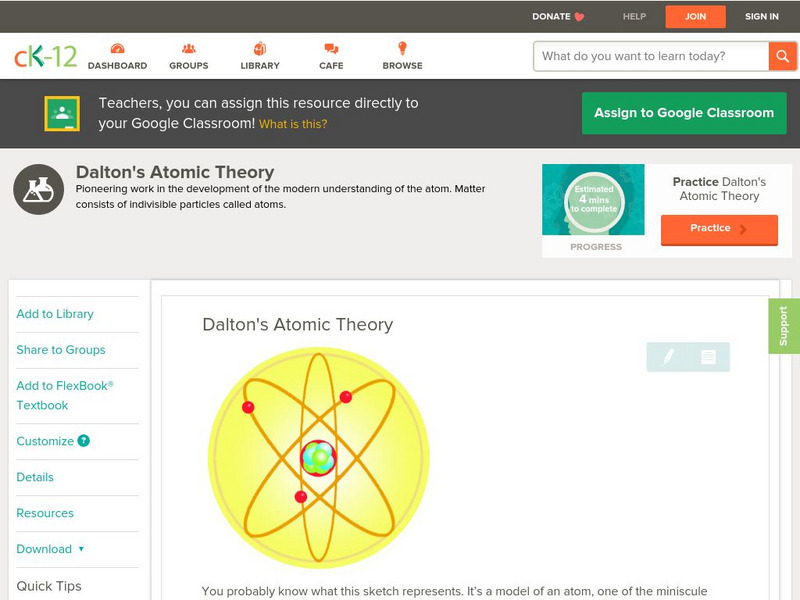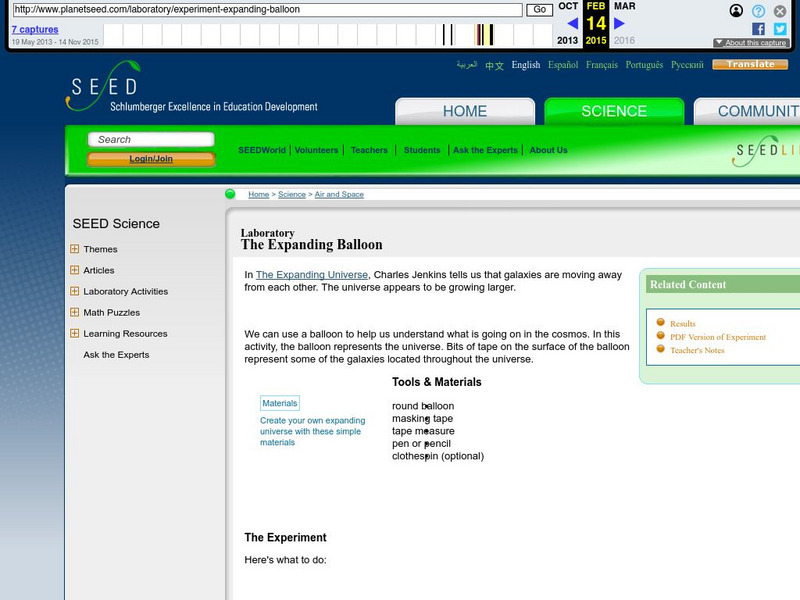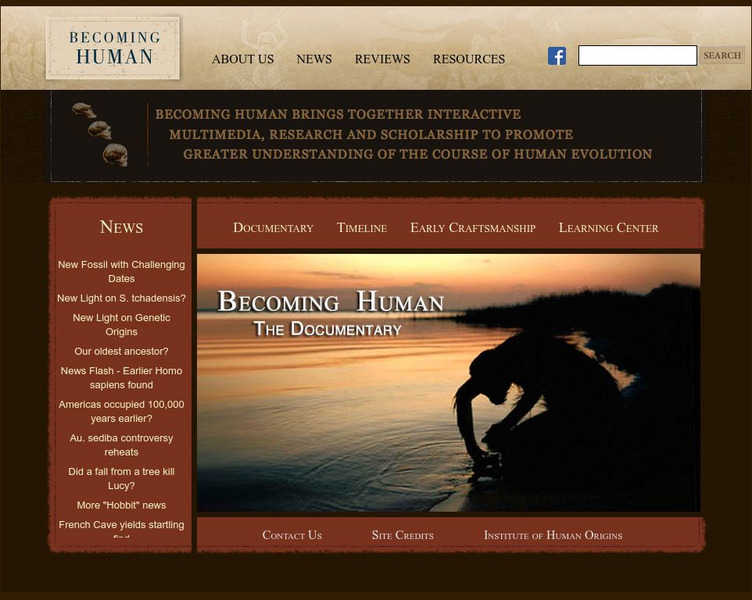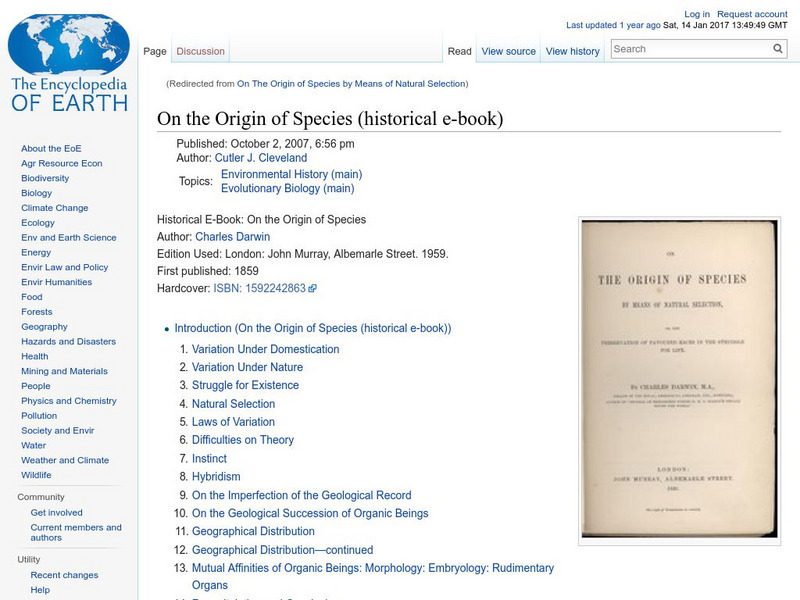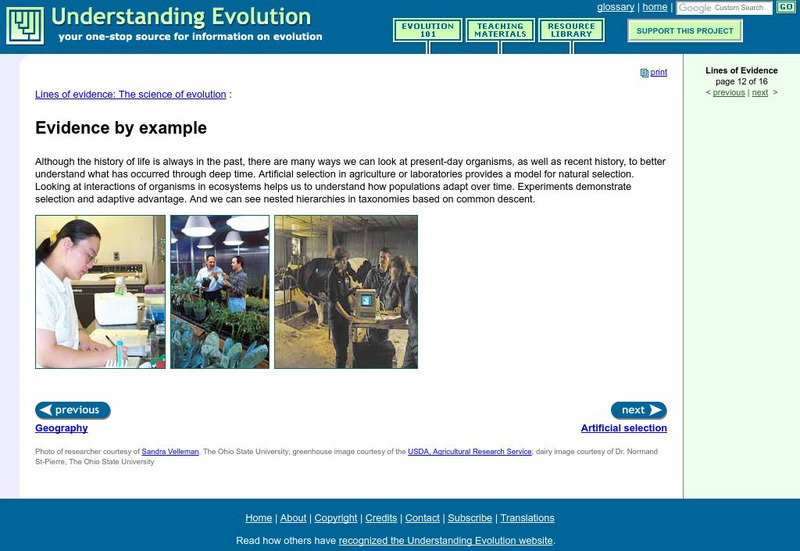BBC
Bbc: Mother of Man Lucy
Article discusses the importance of Lucy to the theory of evolution and her bipedalism form of locomotion. Archived.
Other
The Rise of Evolutionary Biology: Darwin's Ideas
These pages are part of a site called "Evolution," that accompany a textbook by the same name. Mark Ridley is the author. This section is about Darwin, his travels, and his observations that led to "On The Origins Of Species."
Wikimedia
Wikipedia: Punctuated Equilibrium
This brief explanation of punctuated equilibrium includes paragraphs on the history of the theory and the controversy surrounding it.
CK-12 Foundation
Ck 12: Biology: Principles of Biology
[Free Registration/Login may be required to access all resource tools.] Covers four unifying principles of biology: cell theory, gene theory, homeostasis, and evolutionary theory.
BiologyWise
Biology Wise: Darwin's Theory of Natural Selection
Darwin's theory of natural selection and his ideas about evolution are explained here.
Science Struck
Science Struck: Explanation of John Dalton's Atomic Theory
Explains the basic tenets of Dalton's atomic theory.
Other
Evolution and Creation
A short discussion covering the controversy between those who believe in evolution and the "creationists." The author suggests that it is possible to be a Christian and still believe in evolution.
University of Utah
University of Utah: Genetic Science Learning Center: The Evolution of the Cell
Learn about the endosymbiotic theory. This theory explains the evolution of cells from a mitochondria and chloroplast working together in a symbiotic relationship to the current cell structure.
Other
Wikia: Human Science: Law, Principle, Theory, Rule
Law, principle, theory, and rule are the four stages necessary in the evolution of social change. Dive into the depths of how each plays their role in the change. Find examples listed to aid in comprehension of each stage, definitions,...
CK-12 Foundation
Ck 12: Physical Science: Dalton's Atomic Theory
[Free Registration/Login may be required to access all resource tools.] Reintroduction of the idea of the atom and the billiard ball model.
University of California
Understanding Evolution: Nature of Science
Understand the processes behind the nature of science.
Science Education Resource Center at Carleton College
Serc: Science and Religion
A lesson using the strategy of structured academic controversy where students explore the roots of differing perspectives on evolution, In the process, they develop a deepened understanding of science and religion, and tolerance for...
Other
The Expanding Balloon Experiment
Great science experiment to help aide in the understanding of the Big Bang Theory. Students are able to complete this experiment with little materials and individually.
Other
Institute of Human Origins: Becoming Human
Multimedia-rich guide for anyone making their way through a study of human origin. Find information and analysis about the fossil record, comparative anatomy, theories, and the cultural adaptations of humans and their ancestors. With an...
PBS
Pbs Learning Media: Mammals Get Their Chance
In this video segment adapted from NOVA, animations of an asteroid hitting Earth are used to illustrate this widely accepted theory of dinosaur extinction and the resulting conditions that favored mammals.
National Science Foundation
National Science Foundation: Evolution of Evolution: 150 Years of "On the Origin of Species"
When the "Origin of Species" was published in 1859, the ambitions and scopes of science were dramatically expanding. "Origin of Species" marked the transition of biology from a prescience to a science. [4:04]
Encyclopedia of Earth
Encyclopedia of Earth: On the Origin of Species (Historical E Book)
The complete original text of On the Origin of Species by Charles Darwin.
Encyclopedia of Earth
Encyclopedia of Earth: Evolutionary Biology: Darwin, Charles
A biography of Charles Darwin.
Texas A&M University
Peer Curricula: Story Time: Thomas H. Huxley
A biography of the remarkable life of Thomas Huxley, who began his life in abject poverty, but through self-education and dedication, became a star in world science.
University of California
University of California Museum of Paleontology: Fossil Evidence
Understanding Evolution provides evidence for evolution using fossils. There are also links to lesson plans.
University of California
University of California Museum of Paleontology: Evidence by Example
The Understanding Evolution website for teachers provides common examples of evolution, especially by artificial selection.
American Institute of Biological Sciences
Action Bioscience: Species, Speciation and the Environment
The American Institute of Biological Sciences offers this article by Niles Eldredge, evolutionary theorist and curator at the American Museum of Natural History. Eldredge begins with Darwin's theories and summarizes subsequent thought,...
Other
Alfred Wallace/wallace in the Spice Islands
A brief biography of Wallace's time spent in the Spice Islands, and how it related to his theory of evolution. Also includes a description of the sailing vessel, 'The Alfred Wallace', which will sail to the spice islands in honor of the...
Indiana University
Indiana University: Evolution of Continents and Oceans
A course lecture on how the Earth's geological features have evolved through the movements of tectonic plates. Explains the different types of plate boundaries and how they manifest in geological formations. Also describes the structure...



